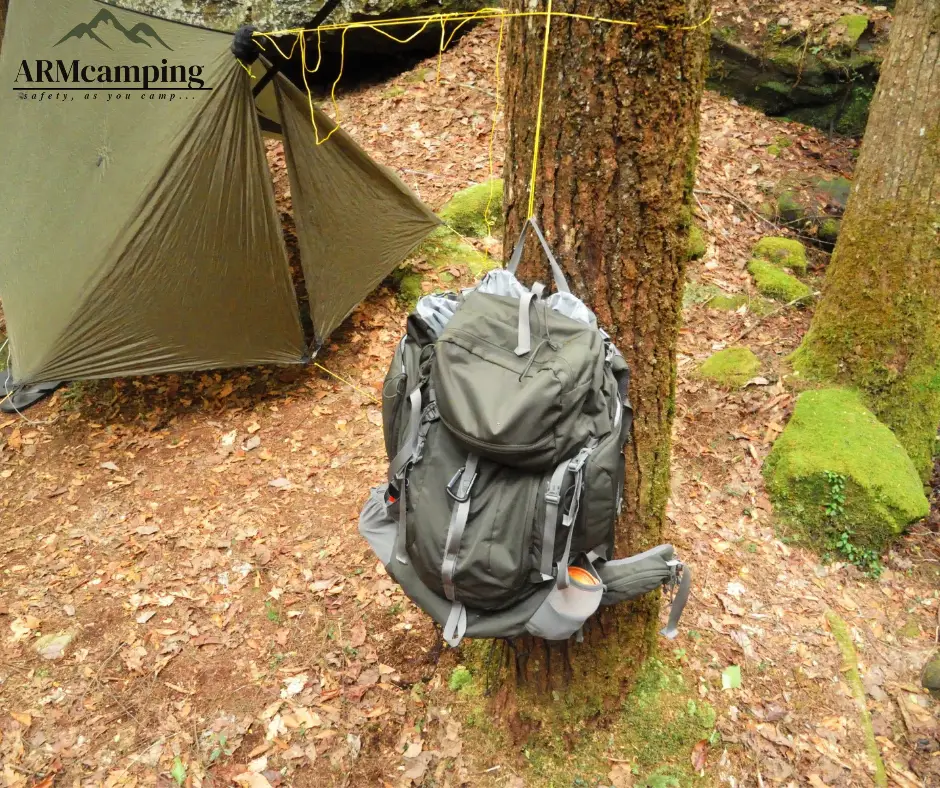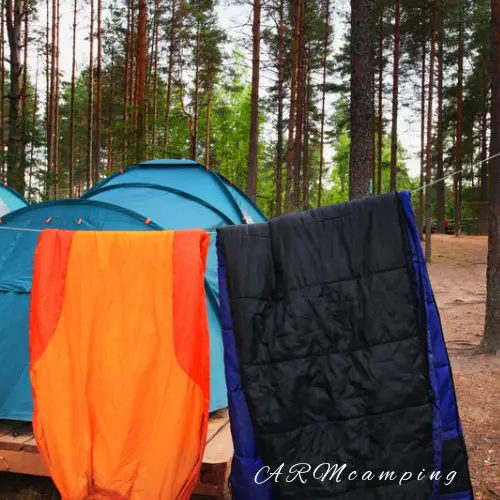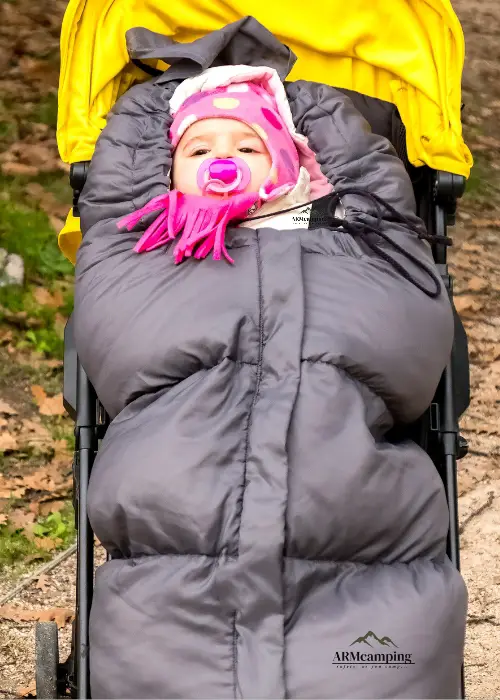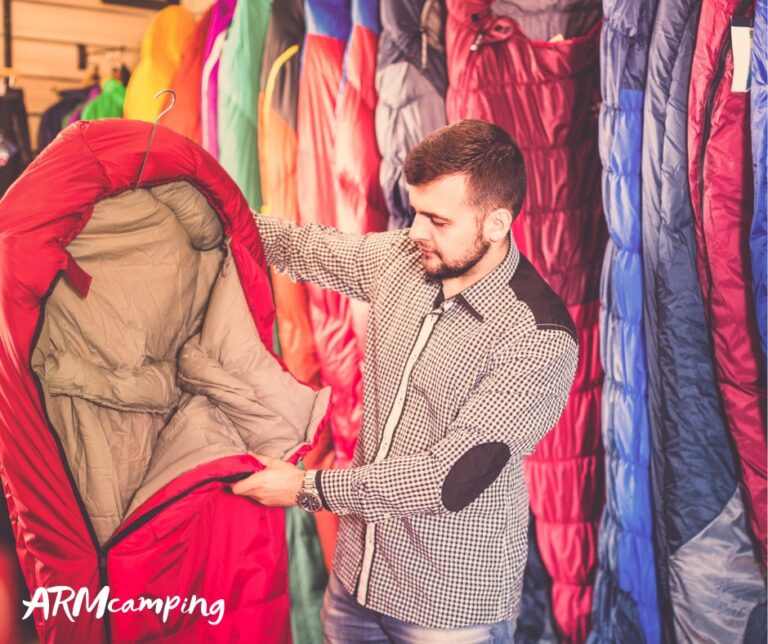
Hammock camping has become increasingly popular in recent years, as it allows campers to enjoy the outdoors without sacrificing comfort. While traditional camping involves pitching a tent and sleeping on the ground, hammock camping allows campers to suspend their hammocks between two trees, off the ground. This can be a more comfortable option for some campers, as well as a lighter option for backpackers, as you don’t need to carry a tent.
What To Do With Backpack When Hammock Camping?
Table of Contents
When packing for a hammock camping trip, it is important to consider what to do with your backpack. One option is to use a storage bag designed specifically for hammocks. These are typically made of waterproof material and can be hung from the hammock’s suspension system.
Another option is to pack your backpack inside your hammock. This can be done by threading the straps through the hammock’s fabric and cinching them tight.
This will keep your backpack from shifting around and provide added protection from the elements. Whichever method you choose, be sure to pack your backpack in a way that prevents it from becoming a trip hazard.
How Do You Hang Your Backpack when Hammock Camping?
When you are hammock camping, there are a number of ways that you can hang or store your backpack. Daytime storage of the backpack is for a shorter duration than nighttime storage. If the weather turns bad or if you leave camp without the backpack, you should make sure that it is securely stored. There are a number of ways to do this, including:
Keep Your Backpack Inside the Hammock
There are some benefits to managing your backpack storage by bringing the backpack inside the tarp with you.
For example, you can use your backpack as a pillow in your hammock. If you don’t pack a lot of hard items, this can be quite comfortable. The main downside to using your backpack as a pillow is that it can get quite sweaty and uncomfortable.
Another benefit of bringing your backpack inside your tarp is that it can act as a weight, helping to keep the tarp anchored down in case of windy weather.
Of course, there are also some drawbacks to this method of backpack storage. It’s difficult to access your backpack if you need to get something out in case of an emergency.
You Keep Outside on the Ground Nearby
When storing a backpack outside, it is important to choose a location that is dry and flat. Avoid placing the backpack on grass or in a puddle. Cover the backpack with a dry bag to protect it from the elements. If possible, store the backpack in a shed or under your hammock to further protect it from the weather.
You Can Also Use Hanging Methods
If you don’t have a tent to keep your backpack in, you’ll need to find a safe place to put it. Hanging it up is a simple way to keep it out of harm’s way and dry during bad weather.
You can hang it from a tree branch, a fence, or even a doorknob. Just make sure the area is free of debris that could fall on your backpack, and that the bag is securely fastened so it doesn’t fall and get damaged.
One way to keep your backpack off the ground and away from animals overnight is to hang it from a tree. You can do this by tying a length of cordage around the tree and attaching your backpack to it with a carabiner.
This will also keep your backpack within easy reach during the day. If you don’t have a carabiner, you can improvise by trimming a stick into a shape that will allow you to hook your backpack onto it.
If the weather is bad, you can hang your bag directly underneath your hammock. This will allow you to keep it close by, but also underneath your tarp and out of the rain.
If you have a nice, sturdy ridgeline, you might find that it can provide the perfect place to hang a backpack at night. By doing this, you can keep your backpack dry and close by, making it easy to grab in the morning.
Should I Backpack with A Hammock?
Whether or not to backpack with a hammock is a personal decision that depends on a variety of factors, such as where you plan to hike and camp, and what kind of gear you already have. That said, there are some benefits to hammock camping that are worth considering.
For one, hammocks are incredibly lightweight and compact, making them easy to carry on long hikes. They also provide a comfortable place to sleep, which can be a major perk after a long day on the trail. Additionally, hammocks can be set up just about anywhere, which can be a major advantage if you’re looking for a more secluded camping spot.
Protecting Your Backpack When Hammock Camping
The quality of the average backpack has really gone up over the years. However, there are still a few things you can do to ensure your backpack lasts as long as possible. For example, always keep a dry bag on hand to protect your belongings from the elements.
It’s a good idea to pack food separately from other items in your backpack, in case of spills or leaks. A bear canister can be a great way to keep food safe and secure while hiking. By taking a few simple precautions, you can help extend the life of your backpack and avoid any unnecessary problems.
However, some camping backpacks have antitheft pockets and compartments that will keep your most important items safe. It would take a powerful motivation to have someone sneak onto a campsite and steal a backpack.
Hiding your bag in the hammock while you are gone is a good way to keep your items safe. Another way to keep your backpack and its contents safe is to keep it close to you at all times, especially when you are sleeping.
Finally
In conclusion, hammock campers should try hangers. Hanging gear that is easily accessible frees up a lot of space under your hammock for other gear. If you have the gear, try it and see if it doesn’t make your hammock camping a little more enjoyable.







